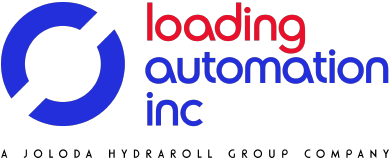January 17, 2019
In the absence of truck loading systems, loading and unloading take a toll on your productivity. Even your most reliable workers can’t walk to and fro carrying weights the entire day. At one point, your staff will slow down, overlook crucial details and cause downtime. It’s safe to say that automatic skates are heaven-sent to your business operations.
It may not be immediately apparent, but truck loading systems also safeguard your worker’s physical well-being. Thanks to these machines, they don’t have to toil with manual handling and lifting, which jeopardise your efficiency and strain the muscles and bones. Heavy work stretches the body to unhealthy limits.
Additionally, bear in mind that, biologically speaking, the human body is not built to carry huge weights for a prolonged period.
Musculoskeletal Disorders in the Workplace
The World Health Organization (WHO) defines musculoskeletal disorders as health issues of the organs responsible for locomotion, such as the muscles, tendons, the skeleton, cartilage, ligaments and nerves. It’s a spectrum of diseases, comprising light, transitory disorders to disabling injuries.
These health problems surface if the mechanical workload is higher than the capacity of the components of the musculoskeletal system. Common issues include strains and ruptures of the muscles, tendons and ligaments; bone fractures; irritation at insertion points of muscles and restriction in the normal functions of the organs.
Musculoskeletal disorders fall into two broad categories:
- Acute – Acute diseases often result from short-term but strong, heavy load. Examples include tearing of a muscle due to one heavy lift or a bone fracture due to a fall.
- Chronic – The cause of chronic diseases are often long-term overload. Over a long period of overexertion, for example, wear and tear of ligaments and muscle hardening may occur.
These conditions also take a toll on productivity. The WHO estimates that, in industrialised countries, about one-third of health-related absences stem from musculoskeletal disorders. Back injuries account for most of the absences, followed by injuries of the neck, upper extremities and hips.
What are the risk factors for such diseases?
- High-intensity forces
- Long-term exposure
- Highly repetitive exertions
- Strong postural demands
- Long-lasting muscular strain
All of them can be found in manual handling of truck loading.
Relief from Manual Truck Loading
Thanks to specially designed skate and track systems, workers don’t have to contend with a prolonged strain on their muscles and bones. They don’t have to manually push or pull, lift or drop heavy loads.
Joloda’s manual skate and track system is made up of rolling skates in special sunken tracks. This allows workers to easily move heavy and large machinery, containers, drums, newsprint rolls and more. No intense strain on the workers’ muscles and bones, as the operation of skate and track systems are a breeze.
On top of that, Joloda systems speed up your loading process by up to 33%, allowing you to load around 3.5 tonnes per minute into your trucks, all with minimal effort and no overexertion on your workers. It can also fit a wide range of vehicles. Our portable skates come in 30 sizes.
